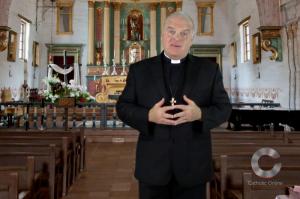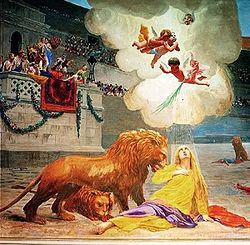We ask you, urgently: don't scroll past this
Dear readers, Catholic Online was de-platformed by Shopify for our pro-life beliefs. They shut down our Catholic Online, Catholic Online School, Prayer Candles, and Catholic Online Learning Resources essential faith tools serving over 1.4 million students and millions of families worldwide. Our founders, now in their 70's, just gave their entire life savings to protect this mission. But fewer than 2% of readers donate. If everyone gave just $5, the cost of a coffee, we could rebuild stronger and keep Catholic education free for all. Stand with us in faith. Thank you.Help Now >
More monster black holes found in deep space
FREE Catholic Classes
Just how big can a black hole get? About 10 billion times the mass of the sun big, according to a study published Monday in the journal Nature.
Highlights
Catholic Online (https://www.catholic.org)
12/6/2011 (1 decade ago)
Published in U.S.
Keywords: black holes, Berkeley, galaxies, astronomy
LOS ANGELES, CA (Catholic Online) - The study announces the discovery of two of the largest black holes yet observed by scientists. The behemoth objects are consuming everything around them as they pull in entire stars and their attendant planets.
Black holes are formed when stars many times the mass of our sun die. Stars are fueled by hydrogen fusion, combining hydrogen atoms and converting them to helium in their cores. These conversions release nuclear energy which is the source of most radiation, including the familiar light and heat we experience from the sun.
This process of billions of nuclear explosions occurring every second in the core of a star, is what keeps it shining and bloated as the force of the constant explosions counteracts the gravitational pull of the matter which makes the star.
However, every star eventually fuses all of its hydrogen into helium. It then begins converting helium into heavier and heavier elements until the atoms in its core combine into iron. Because iron atoms cannot be fused, the process stops just seconds after a star starts producing iron, causing the star to violently die by exploding its outer layers into space. The inner core, if massive enough, collapses inward on itself.
A star such as our sun will collapse only so far, its mass is too small to form a black hole, but larger stars contain much more mass - so much that the process of collapse continues almost to infinity. An entire star, many times the size of our sun, can be collapsed to an object that is infinitesimally small. The object is known as a "singularity" and nobody knows for sure how large a singularity can be, but theories provide estimates which say they can be anywhere from the size of a pea to an atom-or even smaller.
Despite their tiny physical size, they still retain the gravitational effect of their parent star, at the same distance.
Singularities can distort the orbits of nearby objects including other stars passing through a galaxy.
The gravity of black holes is so intense that nothing that passes close can escape. The point of no return around a black hole is known as the "event horizon" and nothing, not even light, can escape the pull of the black hole once it crosses the event horizon. Because of this, singularities are invisible to all direct observation-hence the term "black hole."
However, they can be observed by other means. Black holes disturb the orbits of passing stars, they bend light passing by them, and as they devour nearby objects, they accelerate the matter which is spiraling into their center. This accelerated matter is super-heated and gives off very intense radiation that can be observed.
Scientists have found that supermassive black holes like the ones announced on Monday, occupy the centers of virtually every galaxy. Even our galaxy, the Milky Way, has a supermassive black hole at its center, but nothing near the size of the two announced on Monday.
The two recently discovered black holes were discovered by a team led by Nicholas McConnell and Chung-Pei Ma from the University of California, Berkeley. The two objects are devouring everything around them, but no need to worry. They are 320 and 335 million light years away respectively.
The discovery of the two supermassive black holes raises new questions about the formation of galaxies and black holes themselves. It is believed that such black holes are critical to the formation of galaxies, but scientists still do not understand how that process works. The discoveries will form the basis for further research.
---'Help Give every Student and Teacher FREE resources for a world-class Moral Catholic Education'
Copyright 2021 - Distributed by Catholic Online
Join the Movement
When you sign up below, you don't just join an email list - you're joining an entire movement for Free world class Catholic education.
-

- Easter / Lent
- Ascension Day
- 7 Morning Prayers
- Mysteries of the Rosary
- Litany of the Bl. Virgin Mary
- Popular Saints
- Popular Prayers
- Female Saints
- Saint Feast Days by Month
- Stations of the Cross
- St. Francis of Assisi
- St. Michael the Archangel
- The Apostles' Creed
- Unfailing Prayer to St. Anthony
- Pray the Rosary
Priests Vanishing. Schools Closing. Bishops Silent. Who Will Save the Church?
Christ Redeems Even the Darkest Places of Our Lives
Texas Bans Trans Access to Opposite-Sex Facilities in Schools and Prisons
Daily Catholic
 Daily Readings for Thursday, September 25, 2025
Daily Readings for Thursday, September 25, 2025 St. Finbar: Saint of the Day for Thursday, September 25, 2025
St. Finbar: Saint of the Day for Thursday, September 25, 2025 The Prayer Thank You God!: Prayer of the Day for Thursday, September 25, 2025
The Prayer Thank You God!: Prayer of the Day for Thursday, September 25, 2025 Daily Readings for Wednesday, September 24, 2025
Daily Readings for Wednesday, September 24, 2025 Martyrs of Chalcedon: Saint of the Day for Wednesday, September 24, 2025
Martyrs of Chalcedon: Saint of the Day for Wednesday, September 24, 2025- Haiku Prayer 10: Prayer of the Day for Wednesday, September 24, 2025
![]()
Copyright 2025 Catholic Online. All materials contained on this site, whether written, audible or visual are the exclusive property of Catholic Online and are protected under U.S. and International copyright laws, © Copyright 2025 Catholic Online. Any unauthorized use, without prior written consent of Catholic Online is strictly forbidden and prohibited.
Catholic Online is a Project of Your Catholic Voice Foundation, a Not-for-Profit Corporation. Your Catholic Voice Foundation has been granted a recognition of tax exemption under Section 501(c)(3) of the Internal Revenue Code. Federal Tax Identification Number: 81-0596847. Your gift is tax-deductible as allowed by law.




 Daily Readings for Thursday, September 25, 2025
Daily Readings for Thursday, September 25, 2025 St. Finbar: Saint of the Day for Thursday, September 25, 2025
St. Finbar: Saint of the Day for Thursday, September 25, 2025 The Prayer Thank You God!: Prayer of the Day for Thursday, September 25, 2025
The Prayer Thank You God!: Prayer of the Day for Thursday, September 25, 2025 Martyrs of Chalcedon: Saint of the Day for Wednesday, September 24, 2025
Martyrs of Chalcedon: Saint of the Day for Wednesday, September 24, 2025

